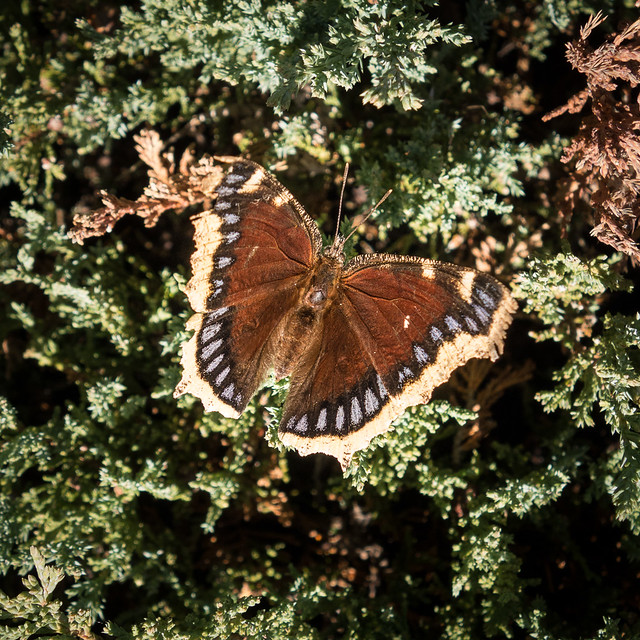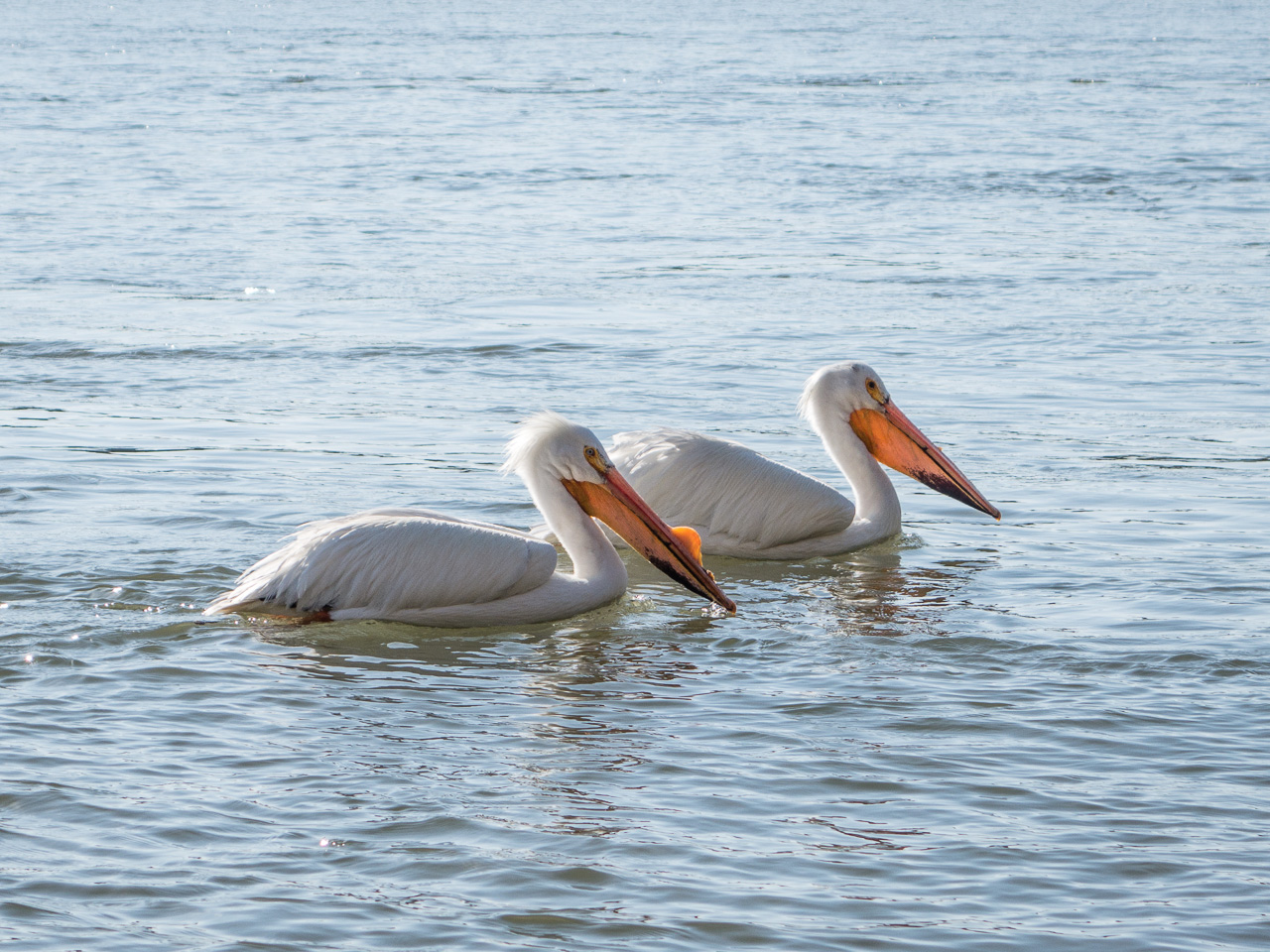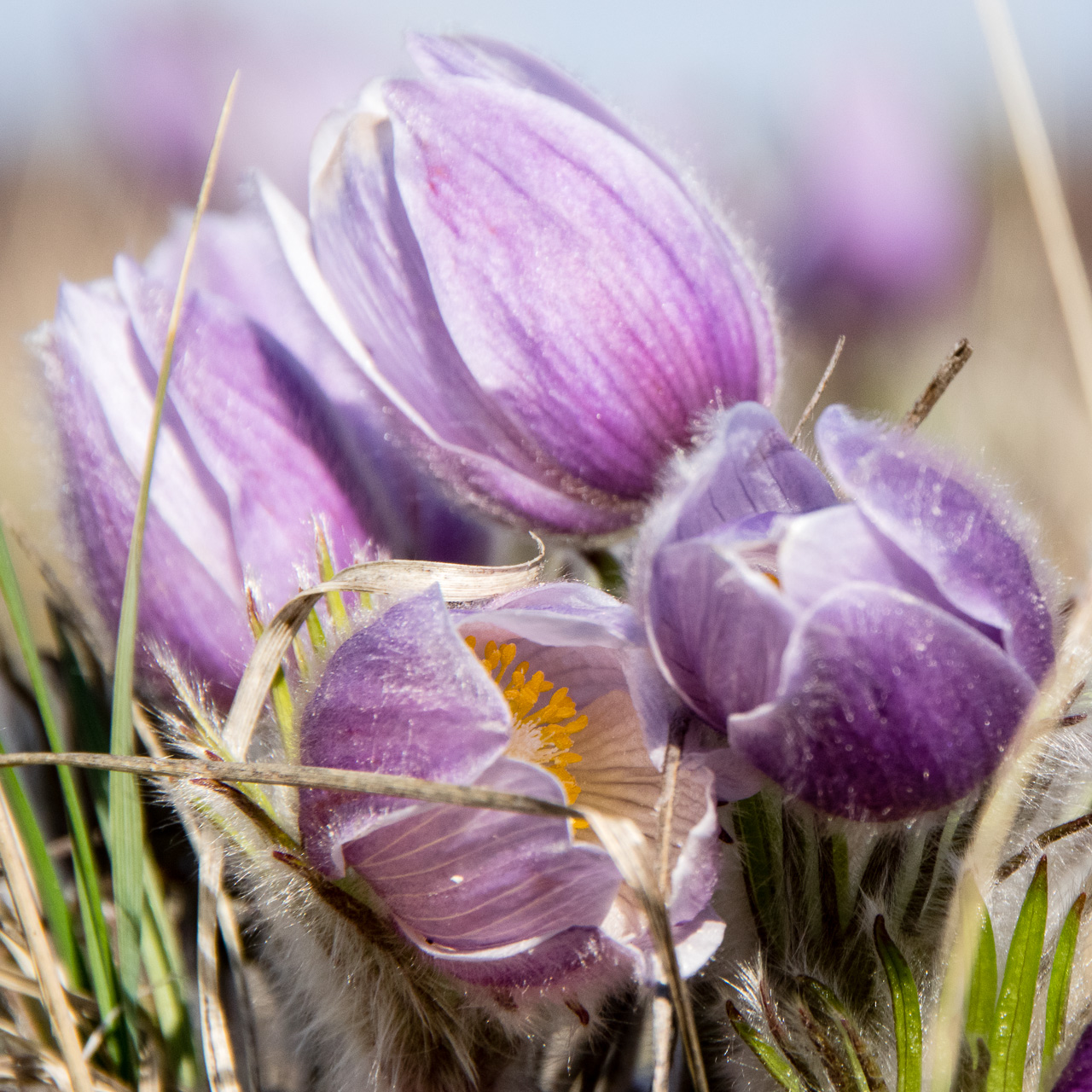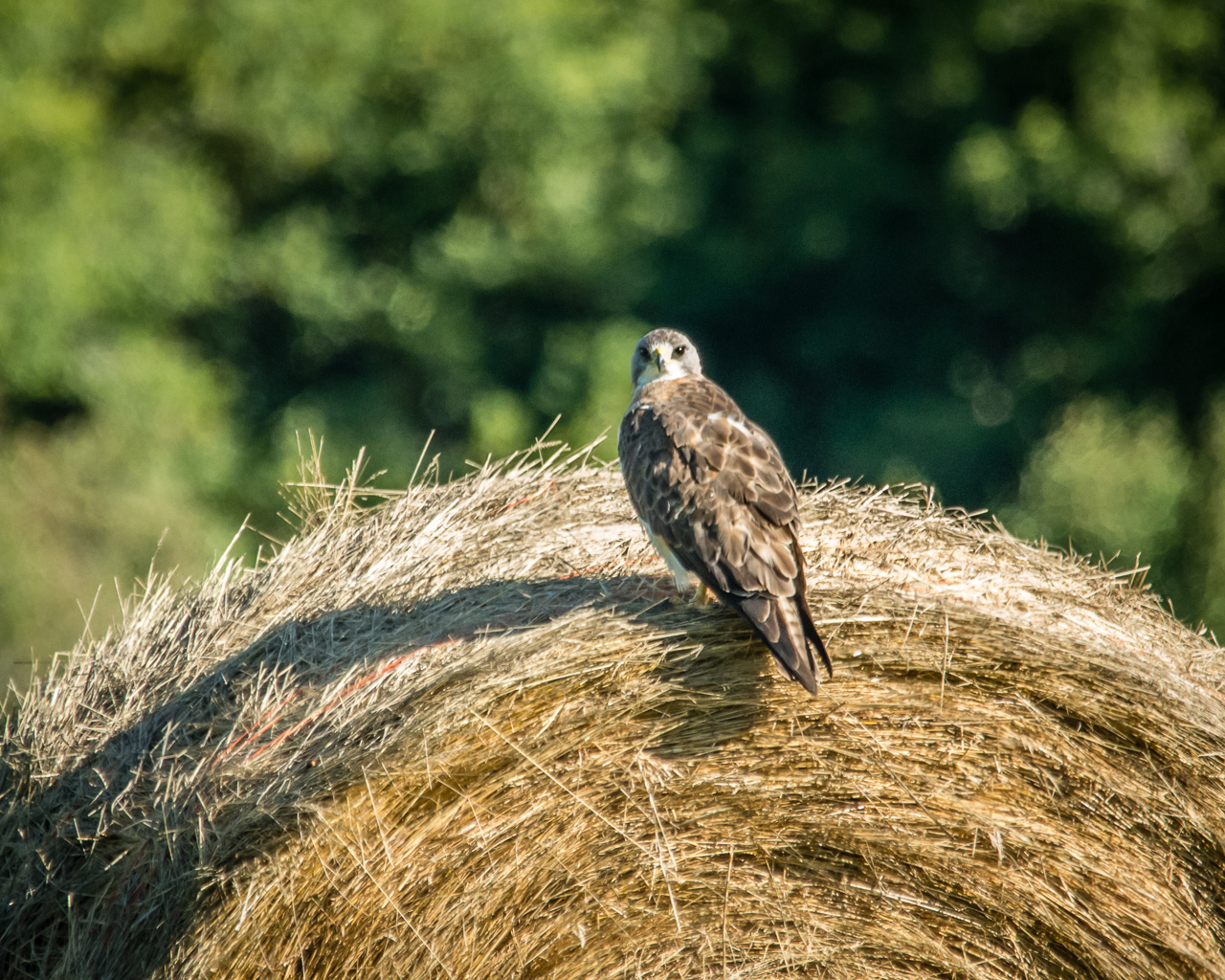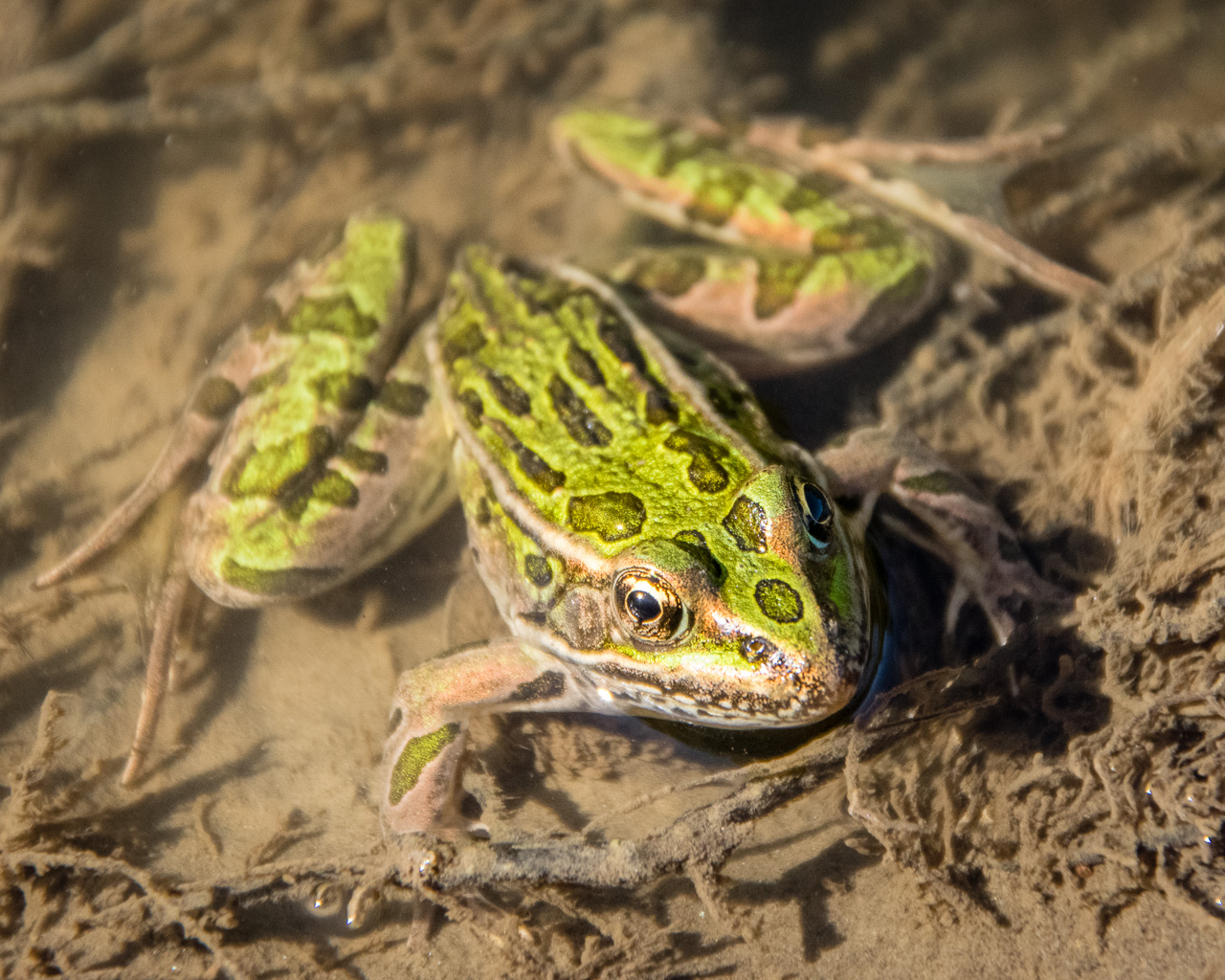Tuesday, 30 September 2014
EcoSask News, September 30, 2014
Saskatchewan can be a Climate Friendly Zone
The Saskatchewan Environmental Society is encouraging local residents to sign a pledge to reduce personal greenhouse gas emissions and support collective and societal climate-friendly actions and policies.
Personal initiatives include turning off your electronic equipment when you’re not using it, installing water-saving showerheads, adding extra home insulation, and not idling your car.
Field Trips
Golden Eagles
Oct. 9, 9 am – Whooping Cranes (tentative)
Oct. 16, 9 am – Northeast Swale and Forestry Farm Park
Other Nature Society Field Trips
Oct. 11, 8 am – 5 pm – Whooping Crane Trip
Oct. 13, 9:30-11:30 am – Woodlawn Cemetery and Weir
Check the Saskatoon Nature Society’s website for full details (e.g. some trips require rubber boots, others will be cancelled if the weather is bad).
News
University of Saskatchewan professor Christy Morrissey is studying the effect of neonicotinoids on Prairie birds. Is this why they're disappearing?
People and pollinators will be happier if we stop mowing public parks – and we’d save money too.
Waste food in Seattle and you risk a fine. When will Saskatoon start providing compost bins as well as recycling bins?
Sustainable Gourmet Dinner
Every year, the Saskatchewan Environmental Society hosts a gourmet dinner with locally-sourced foods. It’s a great way to enjoy local food prepared extremely well. Judy Montgomery has organized the dinner for the past 9 years. The first dinner – for 50 people – was in her own home! Judy sources all the ingredients, lines up the chefs and even contributes some of her own garden produce. Congratulations!
EcoSask News is a weekly round-up of local news and events. Email us if you have items you would like us to include. Additional upcoming events can be found on our Calendar.
You can follow EcoFriendly Sask by liking us on Facebook, following us on Twitter, or by email (top right corner).
Tuesday, 23 September 2014
EcoSask News, September 23, 2014
Events
Bat Chat, Sept. 28
Melanie Elliott will bring her educational bats to Wild Birds Unlimited at 2 pm, Sept. 28, to lead a discussion on bats and dispel some myths.
Winter Composting, Oct. 1
The SK Waste Reduction Council’s presentation at 7 pm, Oct. 1, at the Frances Morrison Library will cover composting through the winter months, including bokashi fermentation and vermicomposting.
Green Drinks Regina, Oct. 2
Green Drinks Regina will meet from 5:30-7:30 pm, October 2, at Abstractions Café (2161 Rose Street).
Saskatchewan's Oil Boom, Oct. 18
A workshop, From the Belly of the Boom: Understanding and Resisting Saskatchewan's Oil Boom, will be offered at St. Peter’s College, Muenster, on October 18 from 1:30-4:30 pm. The workshop will look at how Saskatchewan's oil boom is reshaping rural life and exacerbating environmental degradation and will explore opportunities for building relevant movements across rural and urban communities.
Thumbs Up
 Grasses of Saskatchewan
Grasses of SaskatchewanCongratulations to the Flora of Saskatchewan Association which has just published Grasses of Saskatchewan, the fourth in its series of publications documenting provincial plants. It’s available from Nature Saskatchewan’s website store.
YXE Share-a-Ride
Kudos to Doug Ramage for setting up YXE Share-a-Ride to connect people who can offer a ride with those who need one during the transit lockout.
Cargo Bike Cooperative
A local individual is interested in establishing a cargo bike cooperative, similar to the one they have in Vienna (see below). Let us know if you’re interested in participating and we’ll put you in touch with each other.
“In the beginning, the LRK bike pool was composed of just a few cargo bikes. After three years, it has grown to a total of 20 cargo bikes and trailers. Any kind of transport can be handled in a variety of ways. Two-wheeled and three-wheeled bikes as well as different types of trailers for all types of transport are available. The locations of the bikes and trailers are distributed as evenly as possible across the entire municipal territory. Some vehicles of the pool were built very creatively at the Vienna Bikekitchen and WUK by transforming old bicycles into new cargo bikes. In this way, the LRK vehicle pool also embodies do-it-yourself (DIY) and bicycle-recycling strategies.”
News
Canada Missing Out on Clean Energy
A newly published report says that Canada is missing out on trade and growth opportunities by devoting so few resources to renewable energy.
Protecting SK Wolves - Update
The Association for the Protection of Fur-Bearing Animals has started a letter-writing campaign to protest the provincial government’s decision to issue 100 additional licenses for killing wolves. A rancher and a wolf expert talk about other options for protecting livestock in a related podcast.
Saskatoon Recycles
Curbside recycling has helped divert two-thirds more waste from the landfill this past year. However, Saskatoon households are still more wasteful than average (22 kg compared to the national average of 13 kg).
EcoSask News is a weekly round-up of local news and events. Email us if you have items you would like us to include. Additional upcoming events can be found on our Calendar.
You can follow EcoFriendly Sask by liking us on Facebook, following us on Twitter, or by email (top right corner).
Thursday, 18 September 2014
Saskatchewan Nature Books
Birds
Atlas of Saskatchewan Birds, Alan R. Smith
Birds of the Elbow, Frank J. Roy
Birds of the Saskatoon Area, Anna L. Leighton, Him Hay, C. Stuart Houston, J. Frank Roy, Stan Shadick, eds.
Grass, Sky, Song: The Endangered Beauty of Saskatchewan’s Grassland Birds, Trevor Herriot
Saskatchewan Birds in Pictures, Nick Saunders
The Bald Eagle: Haunts and Habits of a Wilderness Monarch, Jon M. Gerrard & Gary R. Bortolotti
Landscape
Forest Prairie Edge: Place History in Saskatchewan, Merle Massie
North Saskatchewan River Guide: Mountain to Prairie, a Living Landscape, North Saskatchewan Watershed Alliance
Prairie: A Natural History, Candace Savage
Saskatchewan’s Endangered Spaces: An Introduction, Peter Jonker, ed.
Saskatchewan’s Prairie Places, Candace Neufeld
Thanks to the Sun: A Scrapbook of Nature Notes about the Northern Prairies, Peter Jonker
The Ecoregions of Saskatchewan, D. Acton, G. Padbury, C. Stushnoff
Outdoor Activities
Canada's Best Canoe Routes, edited by Alister Thomas (with chapters by a number of Saskatchewan paddlers)
Canoeing the Churchill: A Practical Guide to the Historic Voyageur Highway, Gregory P. Marchildon & Sid Robinson
Canoe Trip: North to Athabasca, David Curran
Noah's Last Canoe, The Lost Art of Cree Birch Bark Canoe Building, Dog Evans
Northern Saskatchewan Canoe Trips, Laurel Archer
Northern Saskatchewan, Canoe Country, Robin and Arlene Karpan
Paddling Routes of North Central Saskatchewan, Gregory P. Marchildon & Carl Anderson
Saskatchewan’s Best Hikes and Nature Walks, Robin & Arlene Karpan
The Lonely Land, Sigurd F. Olson
Plants
Cultivating Our Roots: Growing Authentic Prairie Wildflowers and Grasses, Nora Stewart
Ferns & Fern Allies of Saskatchewan, Vernon L. Harms & Anna L. Leighton
Getting to Know Saskatchewan Lichens, Bernard De Vries
Grasses of Saskatchewan, Anna L. Leighton & Vernon L. Harms
Lilies, Irises & Orchids of Saskatchewan, Vernon L. Harms & Anna L. Leighton
Plants of the Western Boreal Forest & Aspen Parkland, Andy MacKinnon, Derek Johnson & Linda J. Kershaw
Prairie Phoenix: The Red Lily in Saskatchewan, Anna Leighton & Bonnie Lawrence
Sedges, Anna L. Leighton
Water and Wetland Plants of the Prairie Provinces, Heinjo Lahring
Wildflowers Across the Prairies, F. R. Vance, J.R. Jowsey, J.S. McLean & F.C. Switzer
Places
A Geography of Blood: Unearthing Memory from a Prairie Landscape, Candace Savage
A Guide to Nature Viewing Sites In & Around Saskatoon, Peter Jonker & Bernie Gollop, eds.
Badlands: A Geography of Metaphors, Ken Dalgarno
Northern Sandscapes: Exploring Saskatchewan’s Athabasca Sand Dunes, Robin & Arlene Karpan
Old Man on his Back: Portrait of a Prairie Landscape, Sharon Butala
Reading the River: A Traveller's Companion to the North Saskatchewan River, Myrna Kostash
Saskatoon Forestry Farm Park & Zoo: A Photographic History, Sara Williams
The Great Sandhills: A Prairie Oasis, Rebecca Grambo & Branimir Gjetvaj
The Great Saskatchewan Bucket List: 50 Unforgettable Natural Wonders, Robin & Arlene Karpan
The Sand Dunes of Lake Athabasca, Peter Jonker & Stan Rowe
Turning Aside: Observing the Kerrobert Reservoir, Lois Siemens
Wood Mountain Uplands: From the Big Muddy to the Frenchman River, Thelma Poirier, ed.
81 Interesting Places in Saskatchewan, Frank W. Anderson
Wildlife
At Home on the Range: Living with Saskatchewan's Species at Risk, Sue Michalsky, Liz Saunders, Richard Quinlan, Paul Jones, Barry Adams & Kimberly Pearson
Devil in Deerskins: My Life with Grey Owl, Anahareo
Dragonflies & Damselflies in the Hand, G. Hutchings & D. Halstead
Pilgrim of the Wild, Grey Owl
Portraits of the Bison: An Illustrated Guide to Bison Society, Wes Olson
Red Fox: The Catlike Canine, J. David Henry
Saskatchewan Cougar - Elusive Cat, T. White
Watching Wildlife in Prince Albert National Park, J. David Henry
Miscellaneous
Saskatchewan Citizens’ Hearings on Climate Change
Note: For the most current version of this list, please refer to the Books page
Note: We've tried to provide a source for each of the books; however, some of them are out of print or have been self-published and may be expensive or difficult to find. Do check the Saskatoon Public Library and McNally Robinson Booksellers, both of whom stock a wide variety of Saskatchewan books.
Thank You: This list was compiled with assistance from Joan Feather, Branimir Gjetvaj, Leah Japp, Chet Neufeld, Bryan Sarauer, Candace Savage, Lynette Suchar, and Megan Van Buskirk
Email us if you would like to suggest additional books.
Additional Reading: The Ground Beneath Our Feet: Prairie Writers
Tuesday, 16 September 2014
EcoSask News, September 16, 2014
Events
Heritage Tomato Seeds, Sept. 18
Join Permasask and the local heritage tomato seed savers on Thursday, Sept. 18 from 6-8 pm for a potluck supper and seed saving workshop.
Field Trips
Young Naturalists
Sept. 28, 9:30 am – 12:30 pm – Sandhill Crane Field Trip (space is limited; register in advance)
Golden Eagles
Sept. 25, 8 am – Birding at St. Volodymyr Church Park
Oct. 2, 9 am – Birding & Petrofka Bridge Orchard
Other Nature Society Field Trips
Sept. 27, 8:30-10 am – Cosmopolitan Park Bird Walk
Sept. 27, 1:30-9 pm – Outlook District Crane & Goose Trip
Check the Saskatoon Nature Society’s website for full details (e.g. some trips require rubber boots, others will be cancelled if the weather is bad).
News
Eleven, Paul Hanley
Paul Hanley’s new book, Eleven, is now available for purchase. Contact Paul directly to make arrangements (978-4797, paulhanley@sasktel.net). Paul is also interested in speaking to groups and organizations.
In Eleven, Paul argues that the forces eroding the present social-ecological order are also preparing humanity for a cultural transformation that will make a resilient world of 11 billion possible.
Redberry Lake Discovery Trail
The Redberry Lake Discovery Trail, supported by a $5,000 grant from EcoFriendly Sask, is now open. The 2.2 km. trail, designed by the Redberry Lake Biosphere Reserve, includes stations which explain things like how to make an Insect Hotel, which creatures call a rock garden home, and how to make a nest box.
Local Myths
Two news stories got a lot of attention this past week. Here's some background information.
Myth #1: Wolves are a Problem
The province is offering 100 new licenses to kill wolves in response to an alleged increased number of livestock kills. Wolves are an invaluable part of the environment as the video, How Wolves Make Rivers, demonstrates. And anyway, wolves aren’t the real problem:
“if livestock is your business, you've got a lot of problems, but wolves aren't even close to one of them. Remember that wolves killed roughly 8,100 head of cattle in 2010. The USDA's National Agriculture Statistics Service estimates that 1,055,000 head of cattle were felled by respiratory problems in that same year. Over a million. Digestive problems took out another half a million head. And let's not pretend the inhumane manner in which agribusiness raises cattle didn't have something to do with that. Write off another 500,000 each to the weather and various problems with calving. Hell, just flat-out cattle rustling accounted for nearly twice as many lost head of cattle as wolves. Predators are only 5.5 percent of total cattle losses, and wolves are only 0.23 percent of the total.” (Stop Shooting Wolves, You Maniacs)
“I spoke with an Idaho biologist who has worked with both the FWS and the wolf reintroduction program. He argues that human populations continue to ‘overuse’ hunting in the name of sport and this has reduced deer and elk populations, not just in Idaho, but in the Great Lakes and Alaska. The result? Wolves have been forced to look elsewhere for food and sustenance. This results in cattle being attacked because the regular food chain has been disrupted. Hunting wolves won't stop this problem unless all the wolves are killed.” (Heed the Call of the Wild: Don’t Cull the Wolf)
Myth #2: Glass is Recycled in SK
If you’re like me, you’ve been carefully washing used glass jars and setting them aside for recycling. Because that’s what the City told us to do. However, this week we learned that a lot of the glass gets broken and has to be sent to the landfill. The glass jars that aren’t broken are carefully set aside at the landfill for possible future recycling. This is what happens in Regina as well.
“Better than half of the glass that comes into the [Loraas] company's Saskatoon facility ends up shattered and buried in its landfill north of the city. The balance of the unbroken glass is stored in a makeshift pile at the same landfill for future recycling.” (CBC News)
Unfortunately, glass is cheap to make (“recycling glass is only 33 per cent more energy-efficient than making glass from scratch”) and recycling rates are low, even in Alberta, which has three end-markets for recycled glass.
EcoSask News is a weekly round-up of local news and events. Email us if you have items you would like us to include. Additional upcoming events can be found on our Calendar.
You can follow EcoFriendly Sask by liking us on Facebook, following us on Twitter, or by email (top right corner).
Thursday, 11 September 2014
Permaculture: Practical Solutions for Restoring Healthy Ecosystems
"What permaculturists are doing is the most important activity that any group is doing on the planet.
We don't know what details of a truly sustainable future are going to be like, but we need options,
we need people experimenting in all kinds of ways and
permaculturists are one of the critical gangs that are doing that." David Suzuki
What is Permaculture?
“Permaculture is a design system that focuses on meeting human needs – habitat, food, shelter, community, energy – while at the same time healing and regenerating the natural environment,” explains Joanne Blythe, a member of the Permaculture Research Institute of Saskatchewan (Permasask). “It’s a framework for developing solutions, for fixing what we’ve done wrong,” says Mark McLaughlin, Permasask.
Bill Mollison, one of permaculture’s founders, describes permaculture as “a philosophy of working with, rather than against nature; of protracted and thoughtful observation rather than protracted and thoughtless labor; and of looking at plants and animals in all their functions, rather than treating any area as a single product system."
The first step in any permaculture project is to observe nature in order to support the natural systems rather than impose an external order. “We haven’t been trained to observe,” Joanne says. “For every hour of work on the ground, we should do 100 hours of observation. Our western culture has taught us to act quickly with very little observation, but that may not be the best approach.”
Permaculturalists try to look at the big picture and to see how things are connected. Initial activities have focused on gardening because food is central to our survival and one way that people can take responsibility, relatively easily, for their own well-being. Garden designers take into account the local climate, water, and light, choosing plants that are well suited to the local environment as well as plants that grow well together.
 Permaculture principles can be applied broadly. When designing a residence, permaculturalists look at the placement and size of the house on the land, ways to reduce the ecological footprint of the house, renewable energy sources, rainwater run-off, root cellars and cold rooms to store food, a water tank for garden use or possibly drinking water, etc.
Permaculture principles can be applied broadly. When designing a residence, permaculturalists look at the placement and size of the house on the land, ways to reduce the ecological footprint of the house, renewable energy sources, rainwater run-off, root cellars and cold rooms to store food, a water tank for garden use or possibly drinking water, etc.They pay particular attention to placing the elements in relation to one another in order to enhance their functioning and facilitate the system functioning as a whole rather than as isolated, individual parts.
“You look at the whole situation, observe all the opportunities, and choose the ones which will work best together,” Joanne explains. “You’re not just growing carrots or raising chickens. You’re developing an ecosystem. Heat from the chicken coop can warm the greenhouse, and the manure will fertilize the garden.”
“You try to find as many connections as possible,” Mark says. “That’s the really exciting, nerdy side of it.”
Permasask
In 2009, Ken McLeod took a two-week Permaculture Design Certificate course with Jesse Lemieux of Pacific Permaculture. Ken invited Jesse to come to Saskatoon in January 2010 to give a public talk and two-day introductory permaculture workshop. The events generated a lot of interest, so organizers decided to offer the full two-week course in the summer. Approximately 24 people attended the course, and some of them decided to start a group.
The Permaculture Research Institute of Saskatchewan was officially incorporated in 2011 as a non-profit organization, and the group currently has over 50 members. They host workshops, film nights, monthly potlucks, and other educational events, as well as organizing permablitzes. Membership includes a discount on workshops, a 10% discount at Turning the Tide bookstore, and a monthly digital newsletter.
The monthly potlucks are open to everyone – you don’t have to be a member – and there is usually a guest speaker. Recent topics have included urban beekeeping, native plants, water harvesting, and a seed exchange.
In March 2014, Permasask offered a two-day introductory permaculture course in Saskatoon. They are currently developing their own permaculture design certificate course. Instead of offering the course as a two-week block, which many people find difficult to attend, they hope to offer a series of weekend workshops, once a month for six months. This format has been offered successfully in other centres and constitutes the full 72-hour Permaculture Design Certificate course, in which each participant completes at least one permaculture design.
Permablitzes
Permasask holds several permablitzes every year. A group of people gather at a member’s yard to implement a permaculture design that has been prepared by someone who has taken the two-week permaculture design program.
The design usually focuses on enhanced food production. The host, who must be a member of Permasask, provides lunch and supplies and agrees to participate in three further permablitzes.
“The blitzes are an opportunity to put permaculture ideas into practice and to offer hands-on demonstrations,” Joanne says. “People work so hard. We offer some mini workshops over the course of the day so that volunteers and host alike get a lot out of the day. A lot of learning takes place during the permablitz.”
In addition to helping individuals, permablitzes build community. “Working together, there’s a great feeling of camaraderie,” Mark says. “The last blitz was really good. We always get the backbone of the design done but not always the fun, last-minute touches. Last time we did it all and were finished a half hour early.”
Around the World and Across Canada
Permaculture has its origins in the intense discussions between a teacher, Bill Mollison, and a student, David Holmgren, in Tasmania, Australia, in the mid ‘70s. The men were looking for a positive direction forward and a concrete way to address the energy crisis and land degradation. Permaculture UK was founded in 1983, while the Permaculture Institute USA was founded in 1997.
The permaculture movement is particularly active in Western Canada and three groups have strongly influenced Permasask.
Jesse Lemieux, Pacific Permaculture, taught the first permaculture design course in Saskatoon. He offers permaculture design courses and consulting services from his base on Bowen Island, BC.
Tayler Krawczyk, a graduate of the first design course in Saskatoon, was instrumental in establishing the Ness Creek Forest Garden, which incorporates chickens, a pond, an edible hedgerow, and a passive solar greenhouse. Tayler and Solara Goldwynn operate Hatchet & Seed: Edible Landscaping and Applied Permaculture out of North Saanich, Vancouver Island.
Verge Permaculture is a Calgary-based company. Michelle and Rob Avis provide guidance on renewable energy solutions, ecological landscape design and regeneration, as well as offering permaculture design courses.
The Future of Permaculture
 As permaculture develops in a community, people branch out and develop permaculture-related businesses. The most common are permaculture design consultants and teachers, some of whom are listed in the previous section.
As permaculture develops in a community, people branch out and develop permaculture-related businesses. The most common are permaculture design consultants and teachers, some of whom are listed in the previous section.This is just beginning to happen in Saskatoon. Happy Bug Farms is using permaculture principles to guide their farming practices. A Permasask member hopes to start a day care based on permaculture principles.
The Transition movement, which is most active in the United Kingdom, was created by a permaculture teacher using permaculture principles and is a program for transitioning to a post-oil society. It demonstrates the full breadth of permaculture possibilities, from community-owned businesses and energy to local currency.
Conclusion
Permaculture is a positive, optimistic approach to addressing current environmental problems. “We acknowledge we’re in big trouble,” Mark says, “but we don’t let that freeze us.”
“We’re a creative species,” Joanne adds. “We can use that creativity to find solutions, to create relationships that benefit the planet and all its creatures.”
Additional Resources
Gaia’s Garden, A Guide to Home Scale Permaculture, Toby Hemenway
Ron Berezan, The Urban Farmer – resource list for the prairie climate
Permaculture Calgary Guild
Big Sky Permaculture, Calgary – photos of their projects
Harvest Moon Local Food Initiative, Manitoba – Prairie Culture: Regenerative Agriculture Workshops (strawbale building, forest gardening, grey water systems, root cellar building, etc.)
Pattern Literacy – Toby Hemenway
Regenerative Design Institute at Commonweal Garden
Photo Credit: Permasask Facebook page
Tuesday, 9 September 2014
EcoSask News, September 9, 2014
Events
Red Panda Day, Sept. 20
Join the Saskatoon Zoo Society in celebrating Red Panda Day from 10:30 am to 4 pm, September 20.
People’s Climate March, Sept. 21
Saskatoon Is joining the International Day of Climate Action with a rally and a march starting at City Hall, Sunday, September 21, at 1 pm.
The Regina rally will start at the Legislative Buildings at 12 pm.
Cleaning House & Yard (Regina)
The City of Regina is hosting a Household Waste Day from 9 am to 4 pm, October 4. They’ll accept almost everything from hazardous waste to large appliances.
Yard and waste depots will be set up on Saturdays from October 4 to November 8.
 |
| Frigatebird, Baja, Mexico |
Local News
Magnificent Frigatebird visits SK
Magnificent frigatebirds are normally found along the tropical and sub-tropical coasts of the Americas, so Saskatchewan residents couldn’t believe their eyes when they thought they saw one. An article in Nature Saskatchewan’s magazine, Blue Jay, confirms that a magnificent frigatebird was actually a visitor in our province in 2010.
The bird spends its life in flight, except when breeding, and can live up to 34 years. It has a wing span of up to 2.5 metres.
Needs and Yields: A Community Exchange
You may be interested in joining Needs and Yields, a Facebook group that is designed to provide a forum for sharing skills, seeds, plants, etc. If you need something or have something to share, post it.
SES/WDM Receive Action Grant
EcoFriendly Sask is pleased to present the Saskatchewan Environmental Society and the Western Development Museum with a $2,000 grant to help them expand and maintain the Smarter Science Better Buildings education program.
The program focuses on energy-efficient buildings, referencing the net zero home that was on site at the Saskatoon WDM in 2010. They plan to update the program and expand into two new centres (they are currently active at all 4 WDM sites in Saskatchewan).
For more information about our grant program, take a look at 10 Tips for Successful EcoFriendly Action Grants.
Waste Reduction
Bring Your Own Container: Lose All of that Packaging
 Penny McKinlay has started writing a column for the bi-monthly flow magazine about reducing waste and greening our lives. Here’s the first article from page 45 of the September/October 2014 issue.
Penny McKinlay has started writing a column for the bi-monthly flow magazine about reducing waste and greening our lives. Here’s the first article from page 45 of the September/October 2014 issue.Have you ever looked in the cupboard and wondered how on earth you could have accumulated so many take-out containers? Or maybe you threw them out but felt guilty about creating unnecessary waste.
Here’s one solution: provide your own container.
I try and remember to stash a reusable container in my car or office drawer so that if I pick up soup for lunch or have leftovers after a restaurant meal, I can use my own container. Reusable containers are sturdier so I’m less likely to dribble sauce all over my desk, and I’ve avoided adding to my Styrofoam stash.
There’s a side benefit to providing your own container as it prevents impulse purchases. You’ll be less likely to buy a piece of that decadent chocolate cake if you only purchase it when you have your own container.
I feel sorry for restaurants and other food businesses as there really aren’t any environmentally friendly take-out containers. Recycled paper is one of the better options and some vendors, like Floating Gardens, are paying extra to use clamshells made out of recycled plastic.
But the best option of all is your own container that you can use over and over again.
Kill the Cup University Challenge
Ten American universities will be competing in the Kill the Cup University Challenge to see which one can use the fewest disposable cups.
EcoSask News is a weekly round-up of local news and events. Email us if you have items you would like us to include. Additional upcoming events can be found on our Calendar.
You can follow EcoFriendly Sask by liking us on Facebook, following us on Twitter, or by email (top right corner).
Labels:
Activism,
Birds,
Climate Change,
Composting,
EcoFriendly Action Grant,
Education,
Museums,
Recycling,
Regina,
Urban,
Waste,
Wildlife,
Youth,
Zoo
Tuesday, 2 September 2014
EcoSask News, September 2, 2014
Events
Green Roofs, Sept. 16
Michael Molaro will talk about the design, implementation and maintenance of green roofs and share tips on creating and caring for a rooftop garden at 7 pm, Sept. 16, at the Frances Morrison Library. The Sustainable Speaker Series is sponsored by the Saskatchewan Environmental Society and the Saskatoon Public Library.
An interview with Michael and an article about green roofs is available on EcoFriendly Sask’s website.
Bats, Sept. 18
Vikram Misra will discuss Bats: Their Life, Their Viruses, and Did They Really Kill Gwyneth Paltrow in ‘Contagion’ at 7:30 pm, Sept. 18, at the Saskatoon Nature Society’s monthly meeting (Room 106, Biology Building, U of S).
Composting & Waste Reduction Workshops (Regina)
The City of Regina has scheduled several backyard composting and waste reduction workshops in September. Be sure to register as workshops will be cancelled if there are less than 10 participants.
Wildlife Rehabilitation Talks (Regina)
School and community groups in Regina are invited to book an educational presentation with Salthaven's Founder and Director of Rehabilitation in Ontario, Brian Salt, who will be in Regina on September 17 and 18. Visit the Education portion of Salthaven’s website for more information and email Jessica at jhinch@uoguelph.ca to reserve a presentation and discuss the honorarium.
Field Trips
Golden Eagles
Sept. 4, 8 am – Birding at Bradwell
Sept. 11, 8 am – Birding and Plants in the Langham Area
Other Nature Society Field Trips
Sept. 13, 2-7 pm – Fall Picnic at Pike Lake Provincial Park
Check the Saskatoon Nature Society’s website for full details (e.g. some trips require rubber boots, others will be cancelled if the weather is bad).
Interesting Reading
"A new vehicle bridge won’t help congestion, but it will hurt River Landing."
Fracking in Saskatchewan creates risks for endangered species, water supply, and water quality.
What are we going to do to protect water quality in the Qu’Appelle Valley?
“When it comes to environmental health, birds are the front line.” A 16-part series documents disturbing observations in bird populations around the world.
“Recreation is driving the newest frontier of wilderness compromise, particularly recreation that helps the local economy. . . . Wilderness advocates have stopped talking about wildness, because wildness is not commercially viable. The wild, a realm of human experience outside the confines of the commercial mindset, has no burgers and fries.”
EcoSask News is a weekly round-up of local news and events. Email us if you have items you would like us to include. Additional upcoming events can be found on our Calendar.
You can follow EcoFriendly Sask by liking us on Facebook, following us on Twitter, or by email (top right corner).
Labels:
Birds,
Composting,
Energy,
Transportation,
Urban,
Waste,
Water,
Wilderness Navigation,
Wildlife
Subscribe to:
Posts (Atom)


